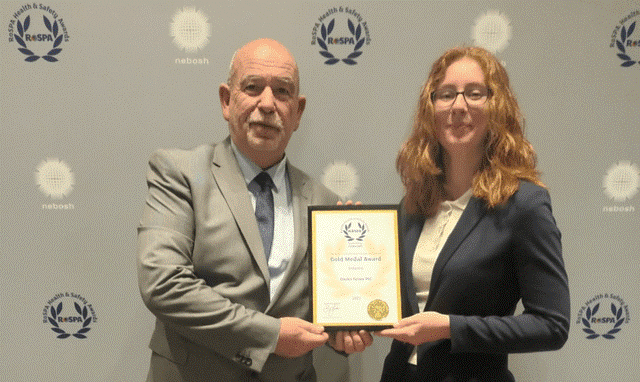Valufin has worked for a year providing a Foreign Exchange treasury management service to an owner-managed organisation with an annual turnover of £5 million per annum. The owner is aware of forex trends but is often travelling and is always busy during the working day. The Finance department has a part-time finance manager with limited past experience in forex management – but typical limited treasury understanding which due to not having been a dealer, which is understandably often the case. Junior finance staff have no understanding of forex or the related risks.
The aim was to improve financial performance and also to produce improvements in process, make real time saving efficiencies and, by improving knowledge and communication, enable informed decision making.
Benefits have been significant and include, through rates achieved, choice of instruments and strategies, clear profits over previous performance. Additionally the provision of support, solutions, information, improved processes, time savings, and better informed decision making have provided the internal structure and strength to ensure that the improved performance is maintained going forward.
Background
The Organisation
The client, an owner-managed business with a small complement of staff, was a seasonal importer of finished goods and sales of local products to the US. Their finance manager had no treasury experience, and their admin team had no forex knowledge. Despite this, the company were dealing with an annual forex turnover of £5 million, dealing in Norwegian Krone, Euros and US Dollars.
Issues: The Market
During 2014, the GBP-USD rate fell by 15% to worse than the budget rate. Conversely, the Krone-GBP rate has improved by over 35%, and the Euro-GBP rate has improved by almost a quarter in the same period.
Issues: the Company
The company had derivatives in the portfolio which were not necessarily applicable for a small company. It had also facilitated from full cover policy to a zero cover policy based on previous years’ mistakes. Junior staff, due to lack of knowledge, had systems put in place to protect the company from risks but created risks of time and process – and therefore costs and margins. They needed approval from higher up in the company. This model was not practical to operate, as the owner had to approve and this could not be achieve practically when needed. By the time a deal was agreed by the owner, resubmitted and confirmed by email, the markets had moved and opportunity to take margin by the provider increased. Forward rates were priced incorrectly with hefty margins and date anomalies also came into the equation, making the entire business inefficient and unsuccessful.
The company’s business is cyclical, with imports and exports not correlating. They also have to manages cash flow tightly and balances payments on account and use of letters of credit to ensure shipments happen as needed.
On top of all this, suppliers can get very difficult and demand instant payments, and customers often pay late. This leads to a massive amount of in-house admin, in terms of frequency of payments. Currency accounts based on the rates at the high street bank are used, inappropriately incurring high transaction charges and margins.
In terms of their internal management systems, very old and complex Excel schedules used to manage cash flows, payments and orders. This is a very manual, time-consuming process, and also proves to be very inaccurate with formulae errors prevalent.
Prior behaviour by the client
Previously, the client wanted to related invoices to hedging, as well as putting their finite information first. They did not manage from point of order; instead, they considered a whole year and therefore relied on one decision for the year. This meant that rates moved contra to that decision many times during the year. Amazingly, the company thought there was nothing that could be done to manage it better. However, in reality, their non-decisions were actually costing the company an estimated 5% of turnover.
The Solution
The coach to the business owner recommended Sharon Constancon, owner and CEO of Valufin, who has extensive experience, well attested success, and credentials in treasury management, to advise them how to solve some of these issues. This led to the following strategy being adopted:
Establishing cover to ensure a percentage of cover in place, relative to risk appetite, business flows and budget rates – not 100% not 0%. In this case it was closer to 30%;
Managed with some cover, worked out the most opportune duration of the contracts to maximise interest rate curve and expected interest rate movements;
When cover was taken the interest rate premium or discount has been optimised thereby minimising daily costs or maximising daily gains;
Managing the spot rate also managing the EUR to USD and NOK to USD to optimise opportunity of trends;
When payments are made, spot versus cover usage was managed to maximise gains;
Changed from using derivative based forwards where the premiums and discounts were inefficiently costed and no gains awarded for early contract utilisation to fixed rate forwards. This over a year equates to about 1% of the value of cover taken. This led to a saving of £15,000.
In terms of payment and hedging, Valufinrecommended cover against only 30% of annual needs, and this was established for the longer dated period to allow for spot usage, decision making that optimised currency opportunities and which reduced accounting administration and swap cash flows. Gains were achieved by optimally using the spot-return and these were 8.3% on the value traded. Benchmarked against the budget rate, the profit taken to the profit and loss account as Exchange Gains returns were 8.4% – £420,000. Cover that is in place hedges a portion of the next financial year’s needs at an unrealised profit, which equates to 11.3% profit as a percentage of the sterling value of cover between two and five months in turnover value. The resulted in an unrealised profit against market for the new financial year of £ 169,500.
Rates, Instruments, Credit, Queries and Margins
Valufin managed the forex treasury activities in such a way to:
Reduce transaction fees – £ 4,500 (in addition to gross numbers above);
Negotiate improved margins on spot and particularly forward deals (numbers quoted above);
Changed the usage of hedging instruments as well as securing correct premiums and attaining full discounts on hedging; an estimated saving of at least 1.5% – £22,500 (included in the gross values those noted above);
Secure increased credit lines with banks and new broking lines, to fix the calculation constraint on credit lines with their high street bank, as well as working with these financial institutions to address errors and anomalies in their online systems. This has a value in terms of time and flexibility.
Managing the Market
Today, cover is being used and topped up in small tranches when improvements are available for either imports or export in respective currencies. Spot rates are used when they are better than the cover already in place. Interest rate premiums and discounts are being managed to reduce the daily costs of hedging, and currency legs are split when opportune. Whereas in the past, time was a hindrance for the company, now time is considered a friend.
Improved Processes – value in time saved and improved accuracy
Valufin has performed the forex admin functions with the bank, which has saved internal staff time. Valufin has taken decisions which have saved staff and owners time. Complex processes have been dropped, and previously risky spreadsheets are being replaced by Valufin’s online exposure and hedging management system.
Valufin also provide market and portfolio feedback; Valufin personnel discuss strategy with the company on a quarterly basis. Quarterly board reports are produced
In terms of accounting,Valufin provides information relating to contract management, cash flows and cost of goods. Valufin worked with accountants to fix cash flow and effective rate accounting to show the true cost of goods and value of sales, profit is now shown accurately per invoice
Future
Valufin will continue working with this company to improve processes further and to start using the online system, which will reduce workload, reduce client errors and provide better management information. The history and information captured will all be loaded by Valufin onto its online system. This will provide further decision support information and support to the company’s board.
www.valufin.co.uk





